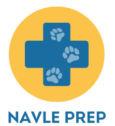The NAVLE exam format is a carefully structured test consisting of six sections with a mix of 300 scored and 60 non-scored items, designed to assess veterinary medical knowledge and clinical competencies. Here’s what you need to know:
- Key Points of NAVLE Exam Format:
After reading this article, you will have a clear understanding of how to navigate the NAVLE’s format, making your exam preparation targeted and efficient.
Introduction
Embarking on a career in veterinary medicine is an exciting journey, and one of the essential milestones along the path is the North American Veterinary Licensing Examination (NAVLE). Achieving a passing score on this comprehensive examination is critical for licensure and the right to practice veterinary medicine across North America. If you’re here, you’re likely seeking a thorough understanding of the NAVLE exam format to bolster your preparation strategy. In this article, we’ll dive into the depth of the exam’s structure, offer insights into its topics, discuss the scoring system, and arm you with the knowledge needed to approach the NAVLE with confidence.
Understanding the NAVLE
The NAVLE stands at the pinnacle of standardized tests in the field of veterinary medicine. It is the gatekeeper to practicing veterinary medicine in the United States and Canada, determining if a candidate is prepared to enter the profession. Administered by the International Council for Veterinary Assessment (ICVA), the NAVLE is designed to assess your basic competence in veterinary medicine after graduation from an accredited program.
Before you tackle the NAVLE, it’s crucial to understand that it’s more than just a test—it’s a comprehensive assessment of your readiness to handle the myriad of responsibilities that come with being a veterinarian. Abilities in diagnostics, therapeutics, and professional practice situations are all under scrutiny as you journey through the exam’s various components.
NAVLE Test Format
As you venture into the world of the NAVLE, your command over the exam format will be as vital as your veterinary knowledge. The format is meticulously structured, consisting of multiple-choice questions distributed over six blocks, each filled with 60 questions. The exam incorporates a total of 360 questions, including 60 non-scored pre-test questions.
During the exam, you’ll be given 65 minutes for each block, adding up to 390 minutes or 6.5 hours of testing time. Additionally, a 45-minute break is allotted, summing up the total testing time to an intensive 7.5 hours. The question types are a mix, predominantly focused on clinical scenarios that require you to apply your knowledge to practical situations.
Of the exam’s content, special attention is given to companion animal medicine—with approximately 50% of questions centering on dogs and cats. Preparing for the NAVLE will thus require not only a wide-ranging grasp of veterinary sciences but also the stamina and focus to navigate a challenging and lengthy computer-based exam.
What Is on the NAVLE?
The topics you will encounter during the NAVLE cover a broad spectrum of the veterinary field. You must demonstrate proficiency across a variety of subject areas, from the basic sciences, such as anatomy and pathology, to the more clinical aspects like surgery and pharmacology. The “big four”—dogs, cats, horses, and cattle—will be your primary focal point, constituting the bulk of species-specific questions.
The NAVLE’s content blueprint reflects the daily tasks and situations you would face as a practicing veterinarian. As such, you can expect scenarios dealing with:
- Preventive medicine
- Diagnosis and treatment planning
- Critical care
To navigate these areas successfully, an integrative understanding that ties together theoretical knowledge with practical application is essential. Remember, the NAVLE is not just testing what you know, but how well you can apply that knowledge to make sound veterinary medical decisions.
How Is the NAVLE Scored?
Understanding how the NAVLE is scored can provide a strategic advantage in your preparation. The exam employs a scaled scoring system ranging from 200 to 800, with a minimum passing score hovering around 425. However, it’s not simply about passing or failing—the NAVLE scoring also offers a detailed feedback report showcasing which areas of the exam were your strongest and which may need additional review.
The beautiful part about the scoring system is that it’s designed to measure competency rather than relative performance. It means your focus should be on mastering the material and those real-world scenarios, rather than worrying about how others are performing. Scoring well on the NAVLE is a tangible affirmation of your readiness to uphold the high standards expected in veterinary practice.
NAVLE Exam Dates
Timing is everything, and your journey to conquer the NAVLE is no different. The NAVLE is administered in two distinct testing windows annually: one in the spring (April) and one in late fall (November-December). This means you have two opportunities each year to sit for the exam. However, you can’t just show up and expect to test; there’s a bit of planning involved.
Registration deadlines are equally crucial. If you plan to take the exam in the spring, your application should be completed by February 1. For the fall window, August 1 is your cutoff. These deadlines are non-negotiable, so mark your calendar and set reminders to avoid any last-minute scrambles.
How you approach these dates can significantly define your study schedule and overall test readiness. Scheduling your exam date as soon as your eligibility is confirmed is a good practice, as test centers can fill up quickly. When you’re granted a permit, manage your scheduling with Prometric carefully to ensure you get a spot that aligns with your preparedness.
NAVLE Exam Outline
The NAVLE exam format is a well-thought-out arrangement designed to challenge and evaluate your veterinary expertise. Each of the six blocks of questions is meticulously structured to simulate the pace and pressures of real-world veterinary practice. Here’s the breakdown of how the exam is organized:
- Six Blocks of Questions: Each with 60 questions, requiring focused attention.
- 65-Minute Sections: Giving you a little over a minute per question, time management is key.
- A Total Test Time of 7.5 Hours: It’s a true test of endurance, as much as it is of knowledge.
To navigate this landscape successfully, it’s useful to have a strategy for each block. Prioritize time-keeping, but don’t let the clock rush you into hasty decisions—which could be detrimental to your cumulative score. Remember, with adequate preparation, each block is an opportunity to showcase your competence and edge closer to achieving your veterinary career goals.
Test Day Tips
You’ve spent months, perhaps even years, preparing for this day, and it’s finally here—test day. To ensure a smooth experience, it is essential to arrive at the Prometric testing center with appropriate identification. A government-issued photo ID will typically suffice, but check the ICVA’s requirements just to be sure.
Walk in with confidence, knowing that personal items are not allowed in the testing area. This includes watches, phones, and bags. Utilize lockers provided by the test center to keep your belongings secure.
Once the test begins, keep an eye on the clock, but also pace yourself. If you encounter a tough question, don’t let it throw you off—make a note of it and move on. You can always revisit it if time allows. During your 45-minute break, refuel with a snack and hydrate, but also take a moment to mentally reset for the next session.
Study Strategies for the NAVLE
A solid study plan personalized to your learning style is at the heart of effective NAVLE preparation. Here are some recommended strategies:
- Structured Study Plans: These provide a roadmap, helping you cover all necessary materials systematically without becoming overwhelmed.
- Review Services: Platforms like VetPrep and Zuku come highly recommended for their comprehensive range of resources.
- Flashcards: Nothing beats flashcards for memorization and rapid review.
- Online Videos: Visual aids can cement even the most complex concepts.
Dedicate time to practice exams to familiarize yourself with the navle exam format. This will not only enhance your content mastery but also improve your test-taking speed and accuracy. The combination of different study tools can cater to various learning preferences, making your preparation as robust as possible.
FAQs on NAVLE Preparation
As you delve deeper into the logistics of the NAVLE, it’s normal for questions to keep bubbling up. Here are a few you might be pondering:
Q: Can I take practice exams that simulate the actual NAVLE exam format? A: Absolutely. The ICVA offers a practice exam that closely mirrors the real test, giving you a chance to gauge your readiness.
Q: If I have special accommodations, how does that affect the exam format? A: The ICVA provides accommodations for those with approved needs. Consult their website or reach out directly for guidance on how this might alter your testing experience.
Q: How many times can I take the NAVLE if I don’t pass on my first try? A: You can take the NAVLE up to five times, but remember to review the ICVA’s retake policy for specific requirements and waiting periods between attempts.
Being inquisitive and proactive about understanding the intricacies of the NAVLE reinforces your preparation efforts. By asking the right questions, you’re paving the way to a successful outcome.
Conclusion
Arming yourself with a comprehensive understanding of the NAVLE exam format is akin to laying a solid foundation for your veterinary career. Each section you’ve read through has been designed to unravel the complexities of the test, presenting them in an accessible manner that guides you step by step.
Whether it’s embracing the breakdown of test dates, wrapping your mind around the NAVLE’s detailed exam outline, or soaking in last-minute test day tips, this knowledge empowers you to approach the NAVLE with a sense of preparedness and strategy.
Once you step into the Prometric test center, remember that the years of hard work, the countless hours spent in study, and the thought-out approach to mastering the NAVLE exam format have all led you to this moment. Ready, confident, and equipped with these insights, you stand at the threshold of an invaluable milestone in your veterinary journey.
NAVLE exam format details: Understand structure, question types, scoring, and preparation tips for veterinary licensing success.

